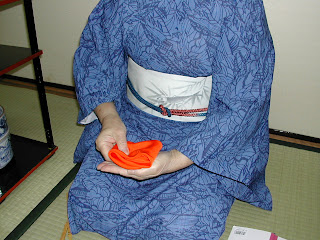
This photo is the one I promised Rebb in one of my previous blogs. We Japanese call it “sasa.” The root meaning of sasa is small. We don’t use it by itself, but when I say, “That’s a small thing” in Japanese, I would say, “Sasainakoto(些細なこと).”
So, this is like a sasa. I was alone in a small café. Two men came in and sat at the table behind me. A waitress rushes back and forth. The men and the waitress seemed to know one another. The men talked about their work, and one of them said something like this: “Chinese are buying the lands in Hokkaido, and Koreans, Tushima. They have a law against Japanese to buy their lands, but we don’t have such law.”
It reminded me of a similar situation back in ’80s. Japanese businessmen were buying the tall buildings in downtown Los Angeles. The headlines and photos on the Los Angeles Times flashed through my head. The other man said, “We should get together and be one.” The tone of the men’s voices was even. I thought it good idea like the EU. It would be excellent if N. Korea disarms and joins. Let’s focus on Peace.
Later, the waitress brought the men drinks and joined their conversation. She spoke louder than them about a celebrity they mutually knew. I tried to read my book by Suzuki Daisetsu, a Japanese philosopher, and waited for a second cup of coffee. The waitress was the only one in the café, and the book was fascinating.
The waitress went on talking. Then, she lowered her voice and said, “This might sound a racist thing, but…I learned that so and so is a foreigner, did you know?” The men said nothing. “The mother of so and so is also,” she went on talking about more celebrities. I kept my eyes on the page. I didn’t turn around.
So, I thought about it and concluded that the people the waitress mentioned must be Japanese. Otherwise, they wouldn’t have held their current and past high posts. Well, I’m familiar with the American minorities’ struggles, but the difference is that we look alike. I don’t see anything wrong with talking about races, but not in a negative way.
I used to think the negative way of talking about races was vague. Now, I think it is quite clear. So, if the café conversation were a straight, thoughtful talk, I would have turned around and joined the conversation. With straight talks, I don’t think we need to lower our voice, or to avoid responding to questions or facing the speaker.
Out of the conversation in the cafe, I thought the waitress used to work in a publishing business, and the men seemed to be journalists. I turned around and asked the waitress for the second cup which I had ordered with my first cup because no refill was available. She said yes and smiled. (In Japan, many waitresses do not come to our table and ask, “Is everything all right?” This is annoying.) Anyway, the waitress returned to the back of the counter and brought me a coffee in a new cup and saucer. I sipped coffee, took out my pen and papers, and started to write. The men stood up, went past me, and left. Another waitress came in to the cafe and wore an apron. I kept writing. The head waitress whispered something to the waitress who just came in. I wondered why she began to whisper, but after I heard a few whispering talks, I put back my pen and papers into my bag, paid my check, and left the café.
Going back to the low growing bamboo, Sasa is written as 笹 in kanji: The top part of the kanji means bamboo, and the bottom, a world. Thank you for reading to the end.





















